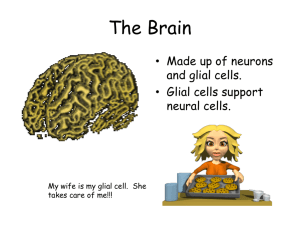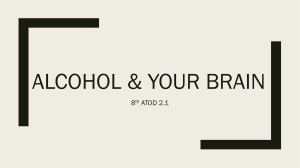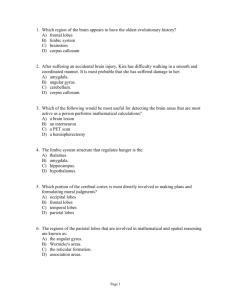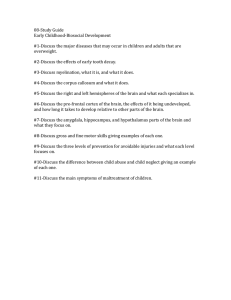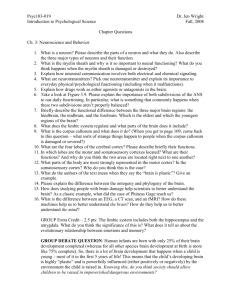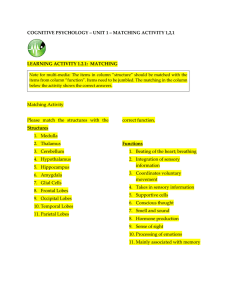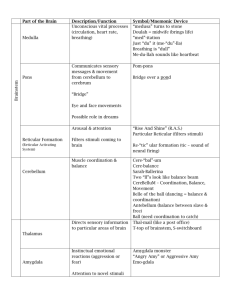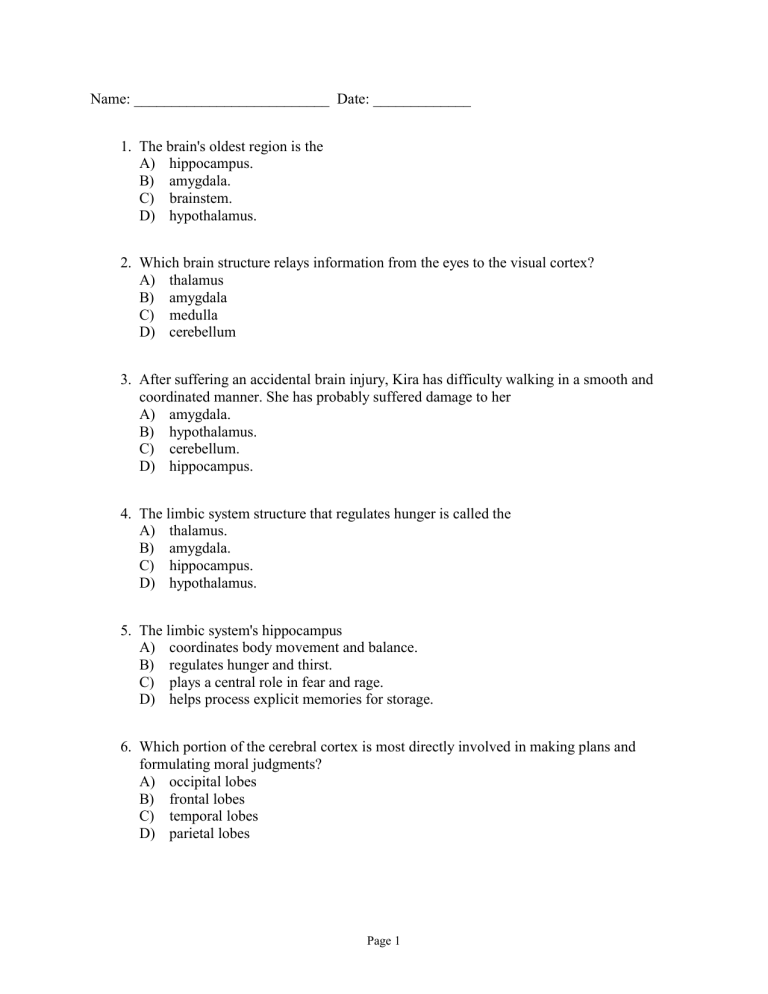
Name: __________________________ Date: _____________ 1. The brain's oldest region is the A) hippocampus. B) amygdala. C) brainstem. D) hypothalamus. 2. Which brain structure relays information from the eyes to the visual cortex? A) thalamus B) amygdala C) medulla D) cerebellum 3. After suffering an accidental brain injury, Kira has difficulty walking in a smooth and coordinated manner. She has probably suffered damage to her A) amygdala. B) hypothalamus. C) cerebellum. D) hippocampus. 4. The limbic system structure that regulates hunger is called the A) thalamus. B) amygdala. C) hippocampus. D) hypothalamus. 5. The limbic system's hippocampus A) coordinates body movement and balance. B) regulates hunger and thirst. C) plays a central role in fear and rage. D) helps process explicit memories for storage. 6. Which portion of the cerebral cortex is most directly involved in making plans and formulating moral judgments? A) occipital lobes B) frontal lobes C) temporal lobes D) parietal lobes Page 1 7. The brain devotes more tissue within the ________ for body areas requiring the most precise movement control, such as the fingers. A) hippocampus B) corpus callosum C) occipital lobes D) motor cortex 8. The regions of the parietal lobes that are involved in mathematical and spatial reasoning are known as A) the hippocampus. B) the corpus callosum. C) the somatosensory cortex. D) association areas. 9. The thalamus serves as a A) memory bank. B) reward center. C) sensory control center. D) master gland. 10. A loss of physical coordination and balance is most likely to result from damage to the A) hypothalamus. B) cerebellum. C) hippocampus. D) amygdala. 11. If Professor Kosiba surgically removed the amygdala of a laboratory rat, the rat would most likely become A) hungry. B) sexually aroused. C) physically uncoordinated. D) less aggressive. 12. The parietal lobes are to ________ as the occipital lobes are to ________. A) hearing; speaking B) sensing touch; seeing C) tasting; smelling D) speaking; seeing Page 2 13. An area at the rear of the frontal lobes that controls voluntary movements is called the A) somatosensory cortex. B) motor cortex. C) corpus callosum. D) frontal association area. 14. Direct stimulation of areas within the motor cortex would most likely result in A) feelings of anger. B) an accelerated heartbeat. C) a sensation of being touched on the arm. D) movement of the mouth and lips. 15. The somatosensory cortex is located in the ________ lobes. A) parietal B) temporal C) frontal D) occipital 16. A person would most likely experience an auditory hallucination when stimulated with microelectrodes implanted in their ______ lobe. A) frontal B) occipital C) temporal D) parietal Page 3 Answer Key 1. 2. 3. 4. 5. 6. 7. 8. 9. 10. 11. 12. 13. 14. 15. 16. C A C D D B D D C B D B B D A C Page 4
